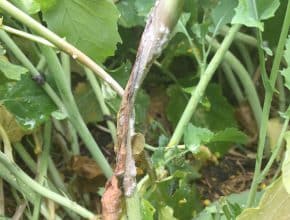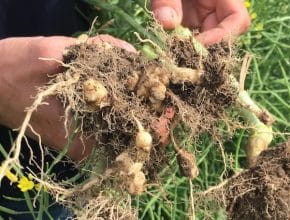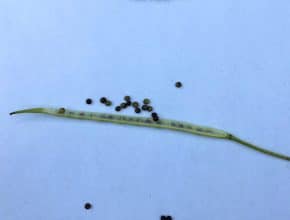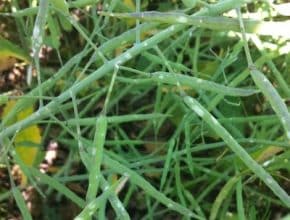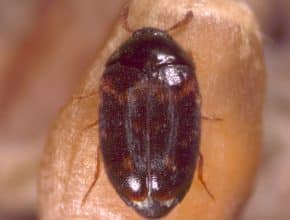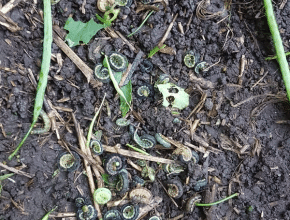Home / Canola Watch / August 28, 2019 – Issue 22
-
How well do you know your canola stem infections? Take this photo quiz to brush up on the distinguishing features of common stem diseases…
-
The following table will help you identify the diseases present, which is necessary in order to make the right management decisions…
-
Clubroot continues to be confirmed in new areas. Random scouting of healthy looking plants is important because by the time galls are big enough to cause above-ground symptoms, clubroot has taken a firm hold in the field…
-
Optimal swath timing for canola yield and quality is when at least 60% of seeds on the main stem are showing some colour change. Here's how to determine seed-colour change…
-
Late season hail can damage pods and increase the shattering risk for those pods. Before jumping the gun and swathing too early, take these decision-making steps:…
-
The goal is to have bins clean before the next crop. This includes sealing or patching (if necessary) to prevent moisture from getting in, and cleaning to remove stored-grain insects…
-
Bertha armyworm numbers are at thresholds in more Peace-region canola fields this week. Growers in the Birch Hills, Saddle Hills and Northern Sunrise areas in particular are encouraged to scout…
-
Growers who participate in the Canadian Grain Commission’s Harvest Sample Program get an unofficial grade, including dockage, oil content and chlorophyll (green) content for their canola…
-
Europe is buying Canadian canola to make biofuel, but each farmer who delivers into the program must answer a short questionnaire. The questions ask about on-farm practices and sustainability standards that growers must meet to qualify for sales into the European Union…

